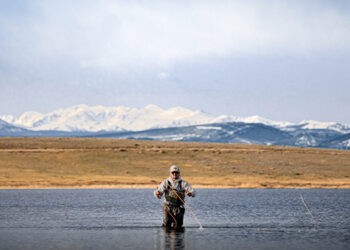The expert advice to answer your most pressing questions. This month, Adrianna Del Amo, the Fitness and Aquatics coordinator at the University of Maine, shares advice on aquatics risk management.
What are the top three areas you look to manage risk when it comes to aquatics?
ADA: First, I place priority on managing risk by training my staff on how to identify and mitigate risk. My staff spend more time in the pool than I do, and they also see operations from a perspective I do not. By defining their role as being a part of risk management, they bring things to my attention I may not have considered.
Second, having regular training with my staff for them to work on life-saving skills, as well as work with staff they might not have a regular shift with, is important to managing risk. Our lifeguarding curriculum is based on working with a team; if you drill scenarios enough for them to be “muscle memory” if an emergency were to occur, everyone will know their role if an event takes place.
Third, make sure the physical space is up to industry standards and free of all potential risks.
With the impact of COVID-19, social distancing and cleanliness are key. How does this play into aquatics? How are you addressing these items to reduce risk?
ADA: Social distancing requirements make it difficult to ensure our lifeguards are kept safe in the event of an in-water emergency. Due to this, the New Balance Student Recreation Center has made the hard decision to keep our pool closed during Phase One of our opening. Additionally, the American Red Cross has advised all instructors to postpone in-person classes, including Lifeguarding and Water Safety Instructor courses. The summer is the aquatics industry’s season to certify new staff to hopefully work our operations through the year. I have been mitigating this challenge by gathering all email addresses for folks who are interested in being a lifeguard and keeping them up-to-date with any changes.
It is likely we will not be able to safely conduct group swim lessons to beginner swimmers for some time in the context we offered them before. I have put some thought into the possibility of having parents in the water for beginner swimmers and having swim instructors relay drills from a social distance, only offering group swim lessons to the upper levels of learn-to-swim, and maybe only offering private and semi-private lessons. At this point there is a lot of planning for uncertainty, but I’d rather have a lot of plans with one that works than no plans at all.
What has been the biggest lesson you’ve learned in aquatics risk management?
ADA: It is important to think about all the possibilities of a process. Never think, “That could never happen,” because it likely will happen. Prepare your staff for as many situations they might encounter as you can and develop an open door of communication so they feel safe to come to you with concerns or ideas.










